Gary F. Marcus Famous Quotes
Reading Gary F. Marcus quotes, download and share images of famous quotes by Gary F. Marcus. Righ click to see or save pictures of Gary F. Marcus quotes that you can use as your wallpaper for free.
There are, of course, many reasons to think that brains operate mostly in parallel. Individual neurons are too slow to allow brains to operate in strict serial von Neumann fashion, and ample data suggest that in any given laboratory task (and by extension, any real-world situation) many different parts of the brain are engaged simultaneously.
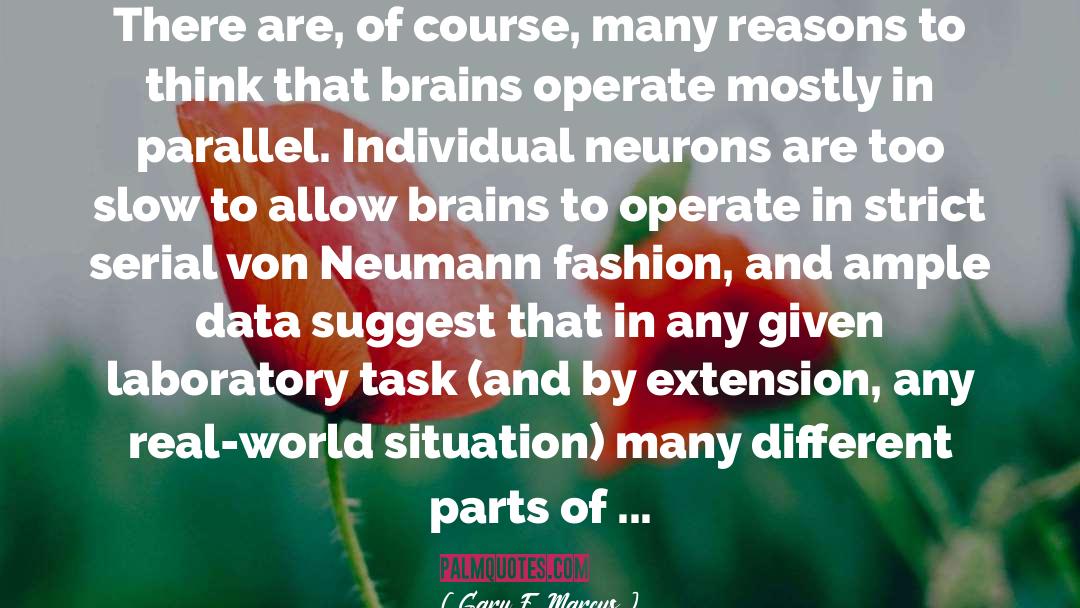
Biology doesn't know in advance what the end product will be; there's no Stuffit Compressor to convert a human being into a genome. But the genome itself is very much akin to a compression scheme, a terrifically efficient description of how to build something of great complexity-perhaps more efficient than anything yet developed in the labs of computer scientists (never mind the complexities of the brain, there are trillions of cells in the rest of the body, and they are all supervised by the same 30,000-gene genome). And although there is no counterpart in nature to a program that compresses a picture into a compact description, there is a natural counterpart to the program that decompresses the compressed encoding, and that's the cell. Genome in, organism out. Through the logic of gene expression, cells are self-regulating factories that translate genomes into biological structure.
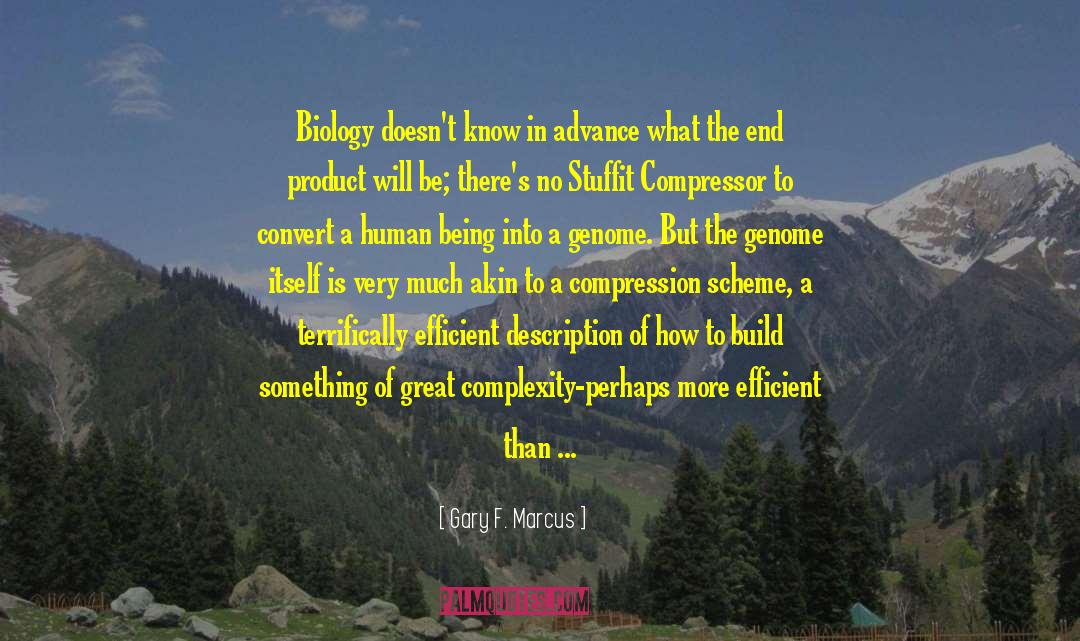
A major push is under way to figure out the molecular basis of those "critical" or "sensitive" periods, to figure out how the brain changes as certain learning abilities come and go. In some, if not all, of those mammals that have the alternating stripes in the visual cortex known as ocular dominance columns, those columns can be adjusted early in development, but not in adulthood. A juvenile monkey that has one eye covered for an extended period of time can gradually readjust its brain wiring to favor the open eye; an adult monkey cannot adjust its wiring. At the end of a critical period, a set of sticky sugar-protein hybrids known as proteoglycans condenses into a tight net around the dendrites and cell bodies of some of the relevant neurons, and in so doing those proteoglycans appear to impede axons that would otherwise be wriggling around as part of the process of readjusting the ocular dominance columns; no wriggling, no learning. In a 2002 study with rats, Italian neuroscientist Tommaso Pizzorusso and his colleagues dissolved the excess proteoglycans with an antiproteoglycan enzyme known as "chABC," and in so doing managed to reopen the critical period. After the chABC treatment, even adult rats could recalibrate their ocular dominance columns. ChABC probably won't help us learn second languages anytime soon, but its antiproteoglycan function may have important medical implications in the not-too-distant future. Another 2002 study, also with rats, showed that chABC can
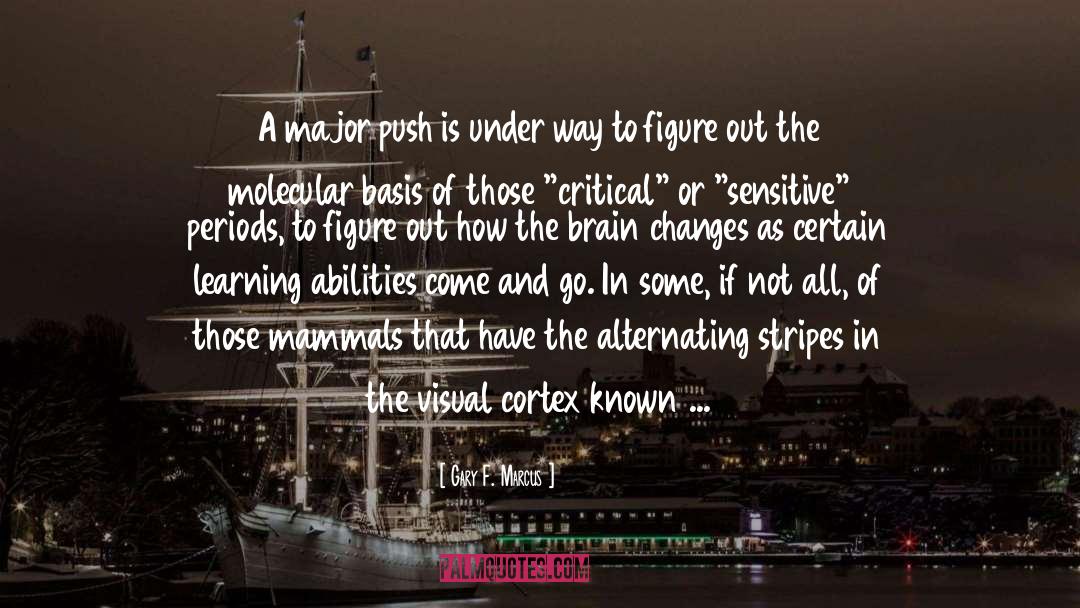
Cell differentiation can turn neurons into everything from clocks that control circadian rhythms to photoreceptors that convert light into electrical-chemical impulses or decision makers that tally votes and decide courses of action. In the retina (often used as a case study because it can be directly and naturally stimulated), there are at least fifty different kinds of neurons specialized to different tasks, such as looking for motion, recognizing colors, detecting objects in low light, and measuring brightness and contrast. In the brain as a whole, there may be as many as 10,000 different kinds of neurons, each contributing to a different aspect of mental life.
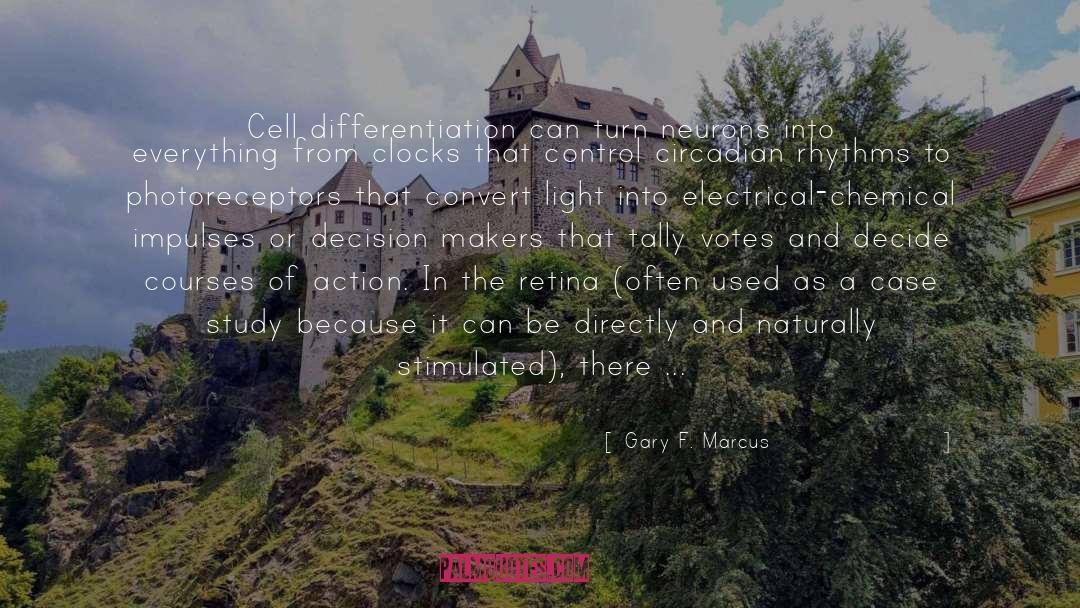
If there is not preformation, and no blueprint, there is also no getting away from the environment. Genes do not guarantee particular products; rather, they provide particular options: To every gene there is an IF, and with that IF comes an option. In many cases, those options are selected based on cues from the environment, and it is for that reason, more than any other, that the answer to the nature-nurture question is not one or the other, but both.
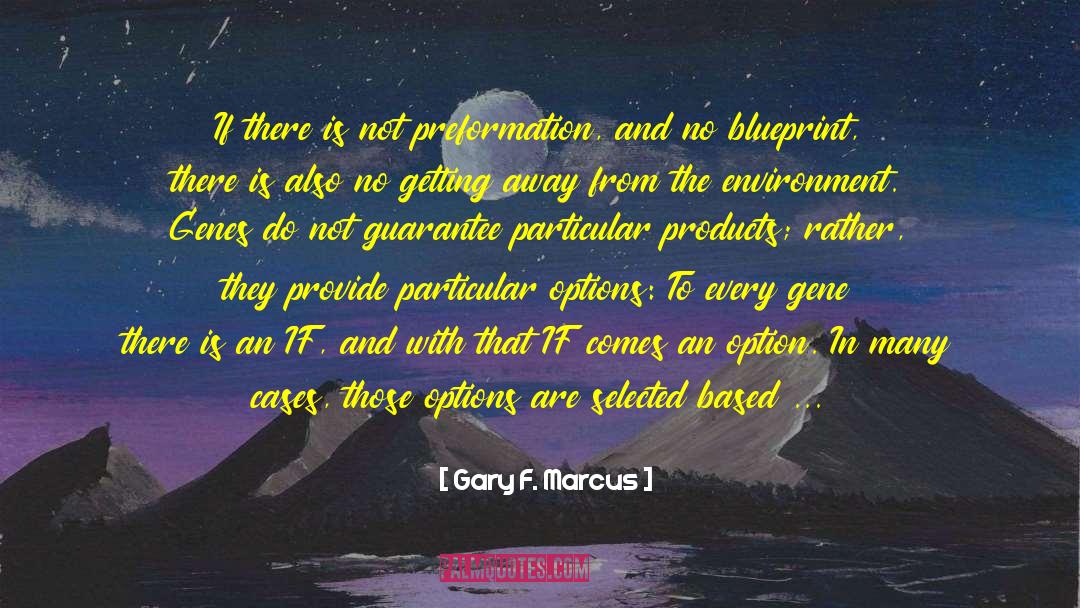
How does the body push the comparatively tiny genome so far? Many researchers want to put the weight on learning and experience, apparently believing that the contribution of the genes is relatively unimportant. But though the ability to learn is clearly one of the genome's most important products, such views overemphasize learning and significantly underestimate the extent to which the genome can in fact guide the construction of enormous complexity. If the tools of biological self-assembly are powerful enough to build the intricacies of the circulatory system or the eye without requiring lessons from the outside world, they are also powerful enough to build the initial complexity of the nervous system without relying on external lessons.
The discrepancy melts away as we appreciate the true power of the genome. We could start by considering the fact that the currently accepted figure of 30,000 could well prove to be too low. Thirty thousand (or thereabouts) is, at press time, the best estimate for how many protein-coding genes are in the human genome. But not all genes code for proteins; some, not counted in the 30,000 estimate, code for small pieces of RNA that are not converted into proteins (called microRNA), of "pseudogenes," stretches of DNA, apparently relics of evolution, that do not properly encode proteins. Neither entity is fully understood, but recent reports (from 2002 and 2003) suggest that both may play some role in the all-important process of regul
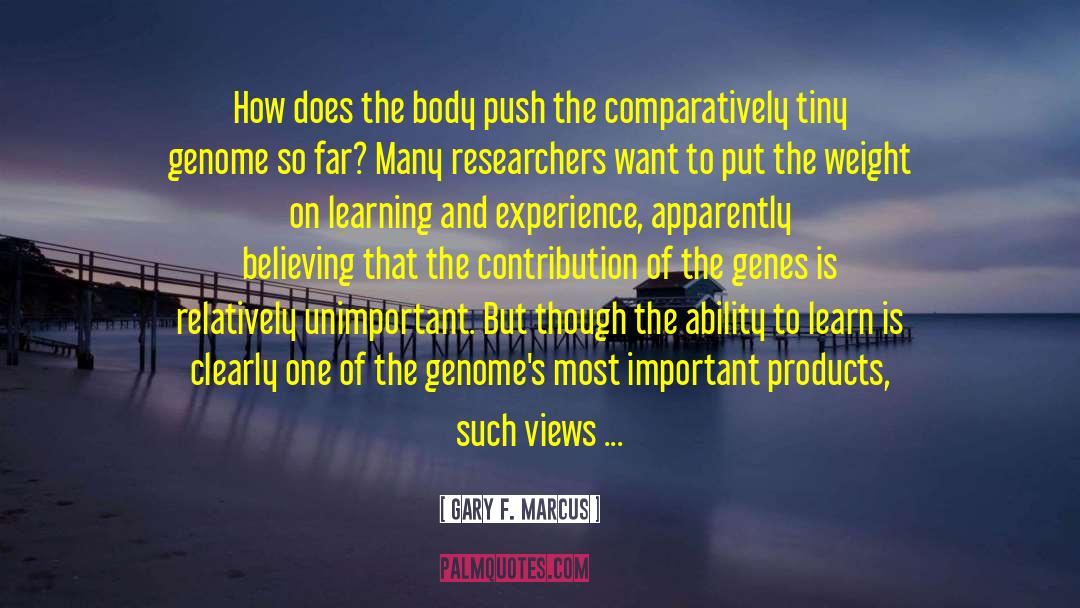
Because genes work in combination, the incremental effect of adding a new gene to a genome may be not linear, but exponential.
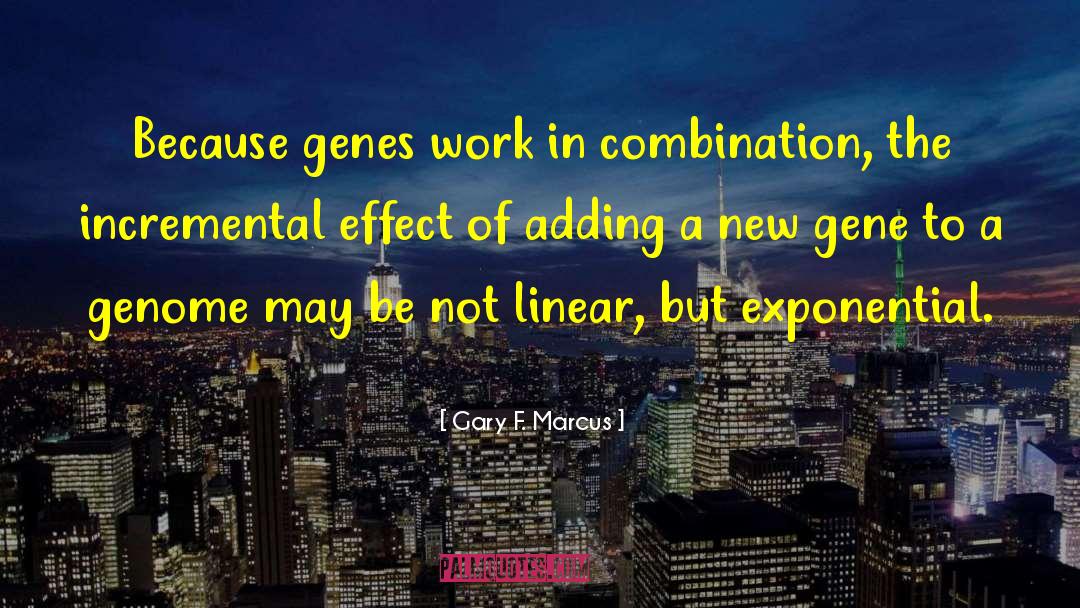
But nobody is born being able to hear [intervals], and many people never master them. Some people never even notice that "Twinkle, Twinkle, Little Star" and "The Alphabet Song" follow the same melody (and hence consist of the same sequence of intervals).
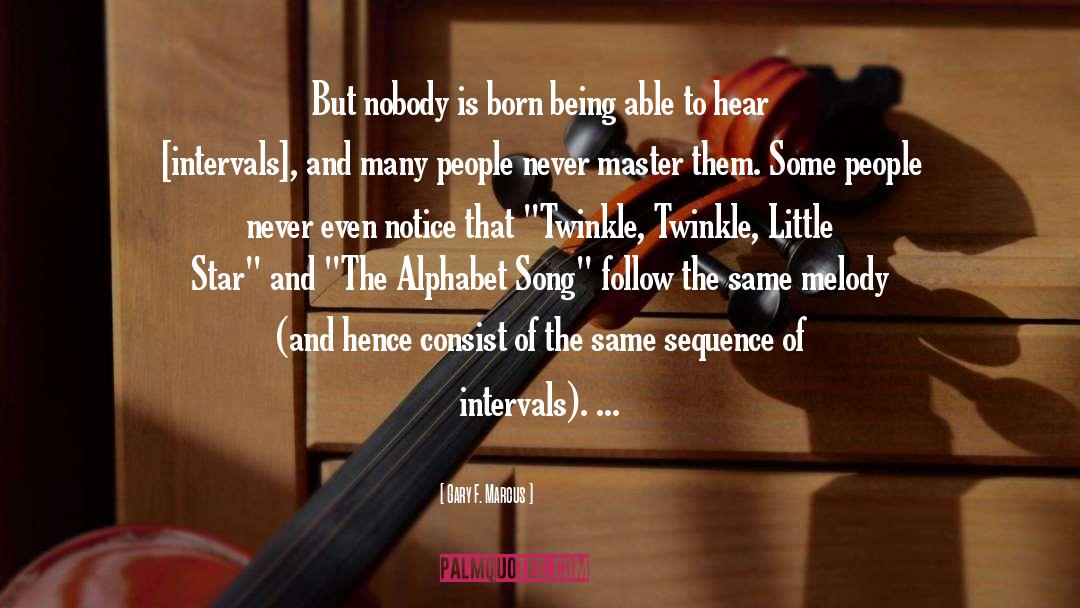
Our sense of a composition largely inheres in how we feel about the individual parts; narrative arcs are almost always essential in drama but (unless there are lyrics involved) often less essential in music. All of this is, I suspect, again symptomatic of human memory limitations. We live, to a remarkable degree, in the present; what happened thirty seconds ago is already rapidly fading from our memory (or at least rapidly becomes harder for us to retrieve).
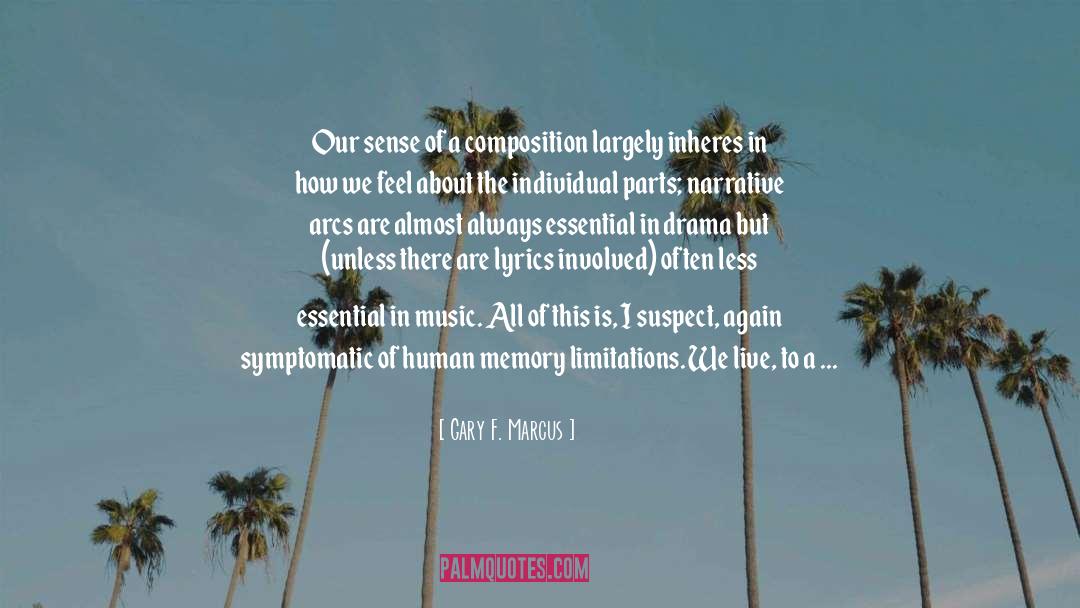
What Jacob and Monod had discovered, in essence, was that each gene acts like a single line in a computer program.
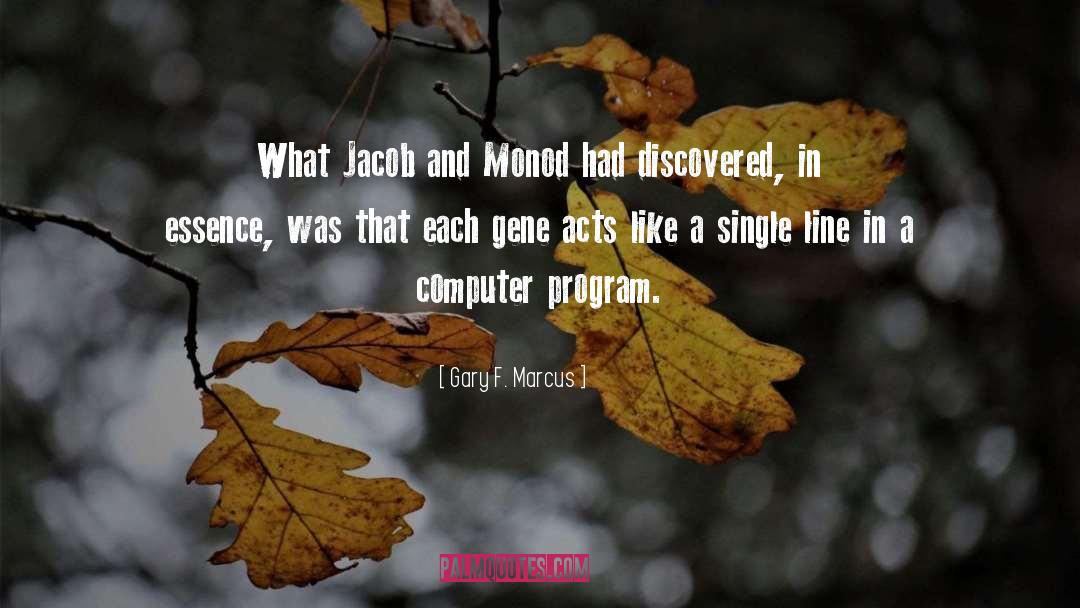
In a 1957 experiment that helped launch the modern study of language acquisition, the late Roger Brown showed that children know that if you say, "Can you see a sib?" you probably have in mind an action or a process. No other mammal seems to be equipped to use such clues for word learning.
Even more dramatically, no other species seems to be able to make much of word order. The difference between the sentence "Dog bites man" and the sentence "Man bites dog" is largely lost on our nonhuman cousins. There is a bit of evidence that Kanzi can pay attention to word order to some tiny extent, but certainly not in anything like as rich a fashion as a three-year-old human child.
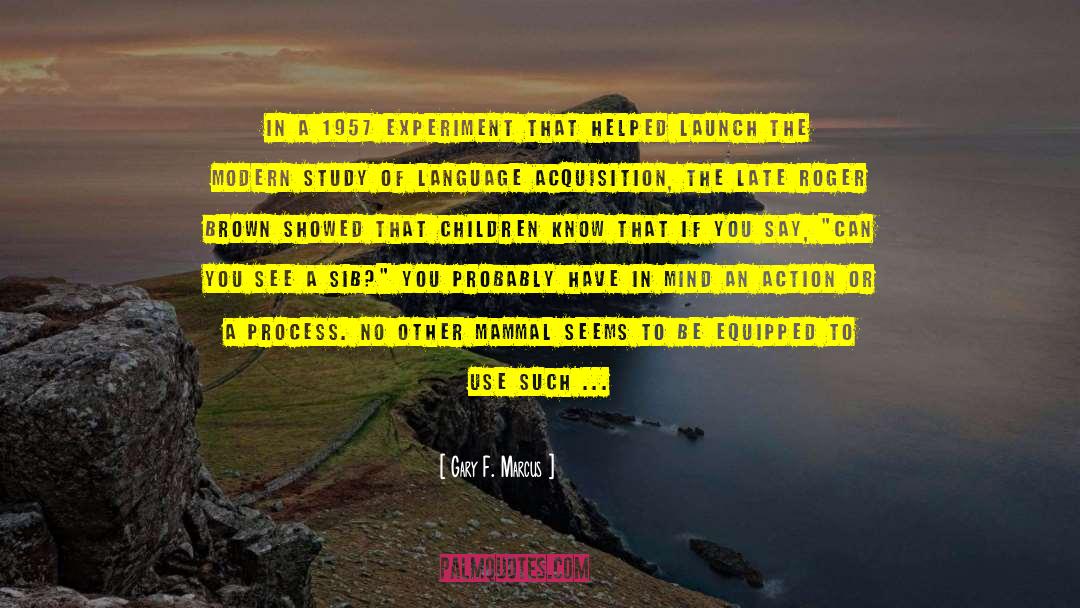
Language builds on our cognitive capacities to reason about the goals and intentions of other people, on our desire to imitate, our desire to communicate, and our twin capacities for using convention to name things and sequence to indicate differences between differing possibilities.
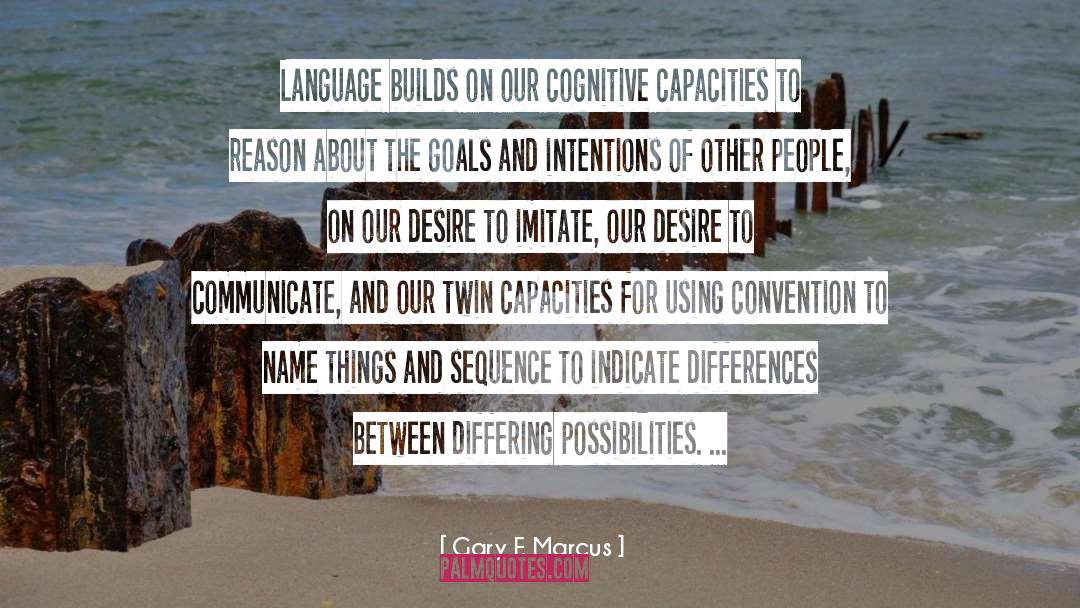
What propels an embryo from one stage to the next-and makes one species different from another-is not a blueprint but rather an enormous autonomous library of the instructions contained within its genome. Each gene does double duty, specifying both a recipe for a protein and a set of regulatory conditions for when and where it should be built. Taken together suites of these IF-THEN genes give cells the power to act as parts of complicated improvisational orchestras. Like real musicians, what they play depends on both their own artistic impulses and what the other members of the orchestra are playing. As we will see in the next chapter, every bit of this process-from the Cellular Big 4 to the combination of regulatory cues-holds as much for development of the brain as it does for the body.

In place of a view of the genome as a static blueprint that operates independently of experience and only up to the moment of birth, we have come to understand the genome as a complex, dynamic set of self-regulating recipes that actively modulate every step of life. Nature is not a dictator hell-bent on erecting the same building regardless of the environment, but a flexible Cub Scout prepared with contingency plans for many occasions.

